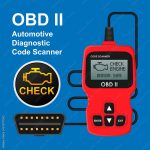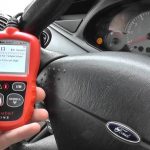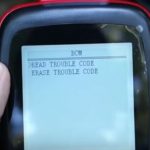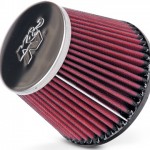
Most of us are familiar with the OBDII (On-Board Diagnostics) code and its meaning. However, you might have no idea what it means. To get the right diagnosis for your car, you should learn what the code means. Trouble codes are not a replacement part but rather an indication of a fault in a certain system, circuit, or sensor. It is important to understand the differences between trouble codes and diagnostic code information.
OBDII code
In order to read your OBDII code for vehicle trouble codes, you need to know a few things about the system. A critical DTC is a warning that indicates a serious issue with your vehicle. It may affect the performance of your vehicle. On the other hand, a non-critical DTC is a warning that may not cause problems with your vehicle. If you are experiencing a problem with your car, a diagnosis is necessary to fix it as soon as possible.
The format of these trouble codes is standardized and is the same for all vehicles. The first character represents the vehicle’s make and model, while the last two represent the SAE generic code. The DTC’s last three characters are information about the specific circuit or system in the vehicle. In general, OBD II codes monitor the fuel and air ratio in a vehicle’s engine.
They also monitor emissions and fuel economy. A P0442 code, for example, is indicative of a problem with a car’s evaporative emission system. In addition to fuel-related problems, other DTCs deal with the ignition system or spark plugs.
A faulty oxygen sensor is another common cause of an OBD code. While the 02 sensor may be easy to replace, it isn’t always necessary to do it. An error in this area could stem from a number of problems, such as a faulty catalytic converter or a bad wire. Moisture may also affect sensor readings. In any case, it is important to understand what the code is before attempting to fix your vehicle.
Diagnostic trouble code
You may notice a check engine light on your vehicle if it is triggered by a problem with the EGR system. This system helps to regulate engine temperatures and nitrogen oxide output. Drivers may also notice a reduction in fuel economy, rough idling, and pre-ignition knocking. The trouble code for EGR system is caused by multiple issues in the car. Among them, a clogged catalytic converter may be the cause. Electrical problems in the EGR circuit may also be to blame. Moreover, a problem with the vehicle’s engine computer may cause the code to display.
The code itself consists of five characters: a prefix that denotes a car part fault, a suffix that indicates the type of problem it may be. The first character of the code is an alphabet, which means it’s a generic SAE international code. The next digit is the manufacturer-specific code, which will be provided on the car’s maker’s website.
Trouble codes are assigned a number and sometimes can mean different things. Some are pending, while others are permanent. However, you can always cross-reference these codes to get a more accurate diagnosis. If you aren’t sure what your car has, a DTC may help you pinpoint the problem and take necessary actions to fix it. The right diagnostic procedure is essential, because an incorrect diagnosis can cause further damages to your car.
The first step in troubleshooting a car’s engine problem is to understand the trouble code. It is a series of five letters and numbers that the onboard computer management system generates. These codes help a car owner determine the problem and determine the cause. Often, these codes are used to diagnose problems in the engine, such as a malfunction with the evaporative emissions system. However, DTCs are not always 100% accurate, so you should make sure that you are using the right diagnostic tool for your specific vehicle.
Meaning of OBD2 code
There are two basic kinds of vehicle trouble codes: generic and manufacturer specific. General codes are common and are adopted by most car manufacturers. Manufacturer specific codes are unique to the manufacturer and are not common. To make it easier to understand the codes, we will go over a few examples. In general, an OBD2 fault code begins with a digit of one and ends with a digit of two. In this way, you can figure out which trouble code is causing the problem.
Regardless of the type of error your car may be experiencing, it is crucial to understand the meaning of the codes and the corresponding parts. While you may be tempted to simply replace a component based on the codes, it is important to remember that a faulty system requires further diagnosis and repair. A mistake that can cause a car to fail is an auto parts store’s attempt to sell you a defective part.
OBD2 vehicle trouble codes are generated by a computer inside a car. The on-board diagnostic system monitors major components and generates trouble codes. Understanding these codes can help you identify faulty components and minimize downtime. Luckily, there are resources available to help you interpret these codes and determine if you need to repair your car. If you have any questions, don’t hesitate to contact us! We’re always happy to answer your questions!
OBD2 vehicle trouble codes are a vital part of your car’s self-diagnosis system. These codes indicate malfunction in a certain system, such as the engine. If this malfunction is not corrected, it can lead to serious problems, including engine damage.
A qualified mechanic will be able to identify the cause of the problem. There are dozens of codes that may indicate problems with your car. A professional will be able to recognize a malfunction when you read an OBD2 code.
Symptoms of OBDII code
If your car displays the “OBDII” trouble code, you are not alone. Millions of vehicles around the world display this code and many are unable to diagnose the issue. If you’re not familiar with the various codes, you can learn more about these codes and how to read them. There are several causes for this error code and what to do if you suspect your vehicle is suffering from one.
OBD codes can be confusing for everyone. They don’t mean your car needs a specific auto part, but they do indicate a broader system problem that requires further diagnosis. Some auto parts stores make the problem worse by trying to sell you a part based on a single code. To avoid being misled by the car diagnostic code, know the causes and symptoms of this code. Once you do, you can get the correct part for your car and reduce the associated downtime.
If you notice that your car is emitting sulfur-like fumes, it’s possible that the catalytic converter has failed. The symptoms of a bad catalytic converter include poor fuel economy, engine misfire and low power. The code P0141 indicates a problem with the downstream O2 sensor, located after the catalytic converter. This sensor sends back the code. Therefore, the next time your car emits a sulfur-like fume, it’s best to get it checked by a mechanic.
The Check Engine Light (or CEL) illuminates when an internal system has detected a fault. The error code may be a problem with the oxygen sensor, fuel pressure regulator, or the air/fuel ratio. A professional can diagnose and repair these problems, which can save you a lot of money and time. The warning light is a critical indicator that your car needs to be repaired immediately. When your car starts displaying an OBDII code, it is a good idea to take it to a qualified mechanic for an inspection.
How to read OBDII code
For the easiest method, you should first know how to locate your vehicle’s OBDII diagnostic port. Usually this connector is under the steering column or beneath the dashboard. However, the port may be hidden behind a panel, such as the knee bolster. If you can’t find it, you should consult your vehicle’s owner’s manual. You can also use a hand-held code reader that’s wired or wireless.
A code will begin with a letter that specifies what kind of problem is affecting the vehicle. OBD codes were developed by the Society of Automotive Engineers. Initially, they used generic codes for most car problems.
Later, however, some manufacturers began adding their own codes. For instance, some car manufacturers started using P0 as a generic code, while others started adding their own codes. Regardless of the manufacturer, it’s helpful to familiarize yourself with the different codes and their meanings.
OBDII codes can be confusing, but they don’t mean that you have to replace an entire system. These codes usually refer to a particular part of the vehicle, so they don’t necessarily mean that a part needs to be replaced. Usually, an OBD code indicates a system problem and will require further diagnosis. Sometimes, auto parts stores will try to sell you an unnecessary part based on an auto diagnostic code.
A DTC is a set of five characters that identify the problem your vehicle is having. The first character of the DTC is a letter that represents the type of problem, while the last two characters are two digits that describe the fault index of the car. When you’re working on a vehicle, understanding the codes can help you diagnose problems faster and avoid costly downtime. So, what do you need to know?






